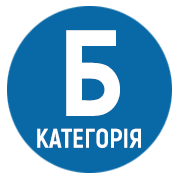FORMING AESTHETIC COMPONENT OF VERSATILE DEVELOPMENT OF 5TH GRADE STUDENTS IN THE PROCESS OF PHYSICAL EDUCATION
DOI:
https://doi.org/10.25128/2415-3605.20.1.22Keywords:
student, physical education, aesthetic component, comprehensive development, dance exercisesAbstract
The article describes the effectiveness of dance classes, which lies in the purposeful implementation of integrated use of physical and aesthetic education that “inspires”, ennobles the content and forms of classes, harmonizes the physical and spiritual qualities of children, ensures the development of body beauty, grace, elegance, aesthetic effect of appearance. The content of the aesthetic component of the program of versatile development of 5th grade students in the process of physical education has been substatiated and verified in this research. It includes classical dance, polka, school waltz, cha-cha-cha, jive and basic aerobics. In the content of the program, the following interrelated components have been identified: aesthetic, motional, ethical and gender, as dancing not only brings children aesthetic pleasure, but also helps to develop their creative abilities, desire for self-improvement and spiritual enrichment. During the pedagogical experiment we used the following methodological techniques mainly for the aesthetic component: additional guidelines and signals; exercises in the imagination; self-control and self-assessment of motor actions; aesthetic assessment and self-assessment of the quality of the exercise; demonstration of photos and movies; reproduction of motor actions of rhythmic models heard; alternating tension and muscle relaxation. Their implementation was aimed not only at achieving the maximum possible for a particular student level of mastery of dance exercises and the development of the aesthetic component, but also at the formation of a healthy, comprehensive and harmoniously developed personality of a student. Thematic construction of the series of the lessons allow to form motor actions in the process of aesthetic cognition, gradual enrichment of motor experience of students based on elements of novelty, an integrated approach to learning motor actions and the development of physical qualities. Promoting the generalization of physical qualities, in which the education of one quality is accompanied by the growth of others, that are not specially developed and providing interdisciplinary links. The importance and significance of choreography classes is explained by the fact that dance by its nature is a synthetic art form that combines spiritual-cultural and physical-cultural components, the harmony of which ensures the diverse development of children. The conducted pedagogical experiment confirmed the positive influence of dancing on the development of the aesthetic component, scientifically substantiated that dancing is a particularly effective means of multifaceted positive influence on the education of young people, which allows to recommend it for widespread implementation of physical education.
References
Безверхня Г. В. Мотивація до занять фізичною культурою і спортом школярів 5–11-х класів: автореф. дис. … канд. наук фіз. вих. і спорту: 24.00.02 / Г. В. Безверхня. – Умань, 2004. – 23 с.
Зязюн І. А. Національна державна комплексна програма естетичного виховання / І. А. Зязюн, О. М. Семашко // Рідна школа. – 1995. – № 12. – С. 29–52.
Іванов В. Організація музичного та кольорового середовища на уроках фізкультури для естетичного виховання школярів / В. Іванов // Фізичне виховання в школі. – 2001. – № 3. – С. 38–40.
Клименко В. В. Фізична культура та естетичне виховання / В. В. Клименко, В. Ф. Омельчук. – К.: Рад. школа, 1986. – 136 с.
Кругляк О. Підготовленість майбутніх учителів фізичної культури та початкових класів до реалізації міжпредметних зв’язків у процесі фізичного виховання молодших школярів / О. Кругляк // Педагогіка, психологія та медико-біологічні проблеми фізичного виховання і спорту. – Харків: ХХПІ, 2004. – № 24. – С. 31–40.
Круцевич Т. Ю. Методы исследования индивидуального здоровья детей и подростков в процессе физического воспитания / Т. Ю. Круцевич. – К.: Олимпийская литература, 1999. – 232 с.
Кушнерчук І. І. Танцювальні вправи на уроках фізичної культури як засіб різнобічного розвитку учнів / І. І. Кушнерчук. – Тернопіль: ТНПУ ім. В. Гнатюка, 2012. – 113 с.
Отич О. М. Мистецтво у системі розвитку творчої індивідуальності майбутнього педагога професійного навчання: теоретичний і методичний аспекти: монографія; за наук. ред. І .А. Зязюна / О. М. Отич. – Чернівці: Зелена Буковина, 2009. – 752 с.
Ротерс Т. Педагогічні аспекти підготовки майбутніх вчителів фізичної культури до естетичного виховання школярів / Т. Ротерс // Спортивний вісник Придніпров’я: науковий методичний журнал. – 2005. – № 2. – С. 30–32.
Сморж Л. Естетика: навч. посібник / Л. Сморж. – К.: Кондор, 2007. – 333 с.
Соляна О. Хореографічна культура у контексті реалізації загальної мистецької освіти / О. Соляна // Світ виховання. – 2007. – № 2. – С. 21–23.
Чернишова А. М. Естетичне виховання молодших школярів засобами хореографічного мистецтва / А. М. Чернишова // Естетичне виховання дітей та молоді: теорія, практика, перспективи розвитку: збірник наукових праць / за ред. О. А. Дубасенюк, Н. Г. Сидорчук. – Житомир: Вид-во ЖДУ ім. І. Франка, 2012. – С. 343–348.






